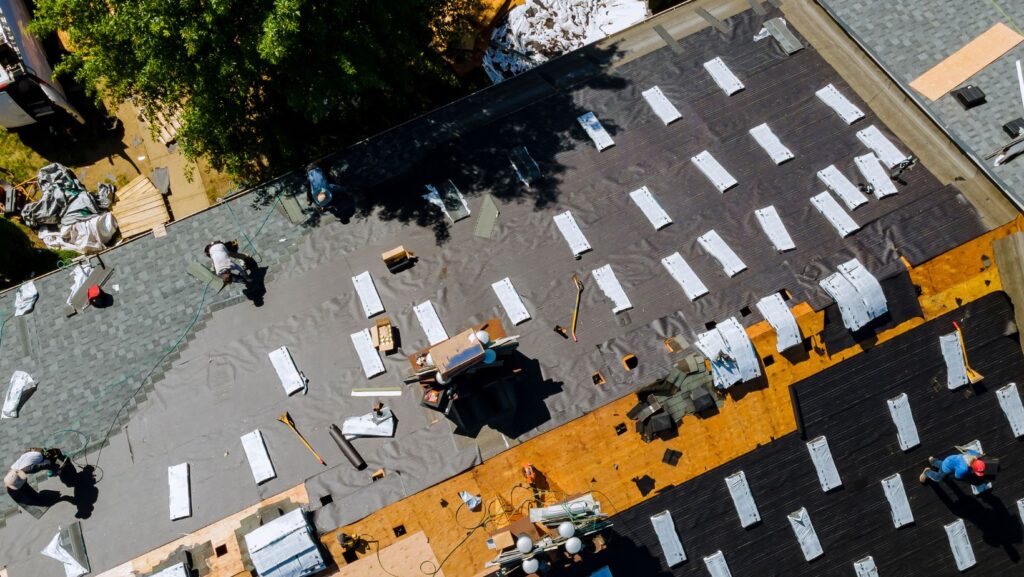
If you live in a part of the country where high and rough winds are a norm, it’s important to prepare yourself and your home to withstand the force of the winds. There are many ways to do this, and one of them is having the right roof type. Roofs do more than add beauty and improve curb appeal; they primarily ensure houses are protected from the elements and winds inclusive.
However, not every roof type is wind-resistant, so finding what works for your area is crucial. Materials are what make a roof, and wind-resistant roofing materials will make all the difference in protecting your home. We will discuss how different roofing materials respond to high winds and factors that will help you make the right choices.
Determining Factors for Selecting Wind-Resistant Roofing Materials
Here are some factors that determine how you choose the right materials:
Wind Speed
If you live in a place like Florida, you must be aware that some months see more winds than others. For example, July sees the most wind and has an average speed of 7.2 miles per hour. Denver has a yearly average of about 15 miles per hour.
High winds can go up to 60 miles per hour, which is enough to lift light objects and destroy different parts of a house. Also, the frequency can be high, with a place like Denver seeing several days of such winds in the spring and summer. Florida can have more powerful winds for longer periods, which means you must consider how your house will respond to them.
You can contact a roofing contractor like Paradise Exterior to remove and replace the roof with a wind-resistant type. Find out more on the Paradise Exteriors website if you want a professional contractor to assess and replace it without hassles. However, you must ensure the material will withstand the elements for many years to come. Otherwise, you might find yourself replacing the roof every couple of years, which can be a strain on your finances since roofing is an expensive project.
Cost and Durability
You must sit and count the cost of replacing your roof before embarking on the project. Some roofing materials fare better against storms and winds than others, although they are expensive. Clay tiles and concrete roofing options are strong and can stay put against strong winds, but they are pretty expensive.
If you want a slightly cheaper option with good performance, consider going for high-quality fiberglass and polymer. While they are not the most affordable option, they perform well when the need arises. Still, they are an excellent choice if you don’t want to spend too much on the materials while not sacrificing performance.
Go for asphalt shingles if you want a truly affordable option with aesthetics, but bear in mind that their performance against winds is not very good. Slate, whether real or synthetic and metal panels are the best rated for high winds but cost a pretty penny.

If quality is your most important factor, these options should be at the top of your list. And if you’re worried about metal rusting or corroding, coating it with acrylic will keep the panels flexible and prevent damage. Follow this resource, https://handymansworld.net/, to find other types of roofing materials.
Installation
You may have the right materials, but poor or improper installation can lead to extensive destruction and waste within a short period. Using the right installation method can determine how well a specific material of choice performs against the elements.
As mentioned, slate is one of the materials that sit at the top of the list of ideal choices to use because of its wind-resistant properties; it’s too heavy for winds to lift easily. Although they are expensive, in the long run, they save money that would have gone toward replacing or repairing damage. However, if not installed well, a small wind can blow them off.
The spacing, placement, and fastener type must be according to expert directions for areas with strong winds. The installation team must also consider sheet metal flashings and closed valleys as they work well to prevent the roofing sheets from lifting at the points where they are joined. Sturdy underlayments contribute to a strong roof that resists damage even in a storm.
Roof Style
It’s important to point out that the shape of a roof can make or mark its effectiveness. Even the strongest roofs can buckle under the pressure of the most forceful winds. This will cause it to crack, tear, or fly off the top of the house.
Fancy-styled roofs are usually just fancy and perform the basic jobs of a roof. In other words, most of them don’t have the capability to withstand forceful winds unless built with the right materials. But a steep-sloped simple roof is strong and works well against the elements. It works even better if installed properly.
But you must select the material that works best for different styles to get the best result. For example, concrete or clay tiles are ideal for steep-sloped roofs. Metal is also great for this roof type. You must consult an experienced contractor to determine which material to use for your ideal roof style.
How Different Roofing Materials Respond to High Winds
Metal is the strongest option among the many choices. While it is lightweight, metal roofing panels or sheets are highly durable and have excellent wind-resistance ratings. Since they attach tightly to the underlayments, it is easy for them to shed the wind instead of buckling under their pressure.

Tile also performs well as a roofing material in high winds-prone areas but for different reasons. Concrete and clay tiles are heavy, and their weight makes it challenging to lift or damage them. They are also durable, so they don’t scare easily, regardless of the force of the winds. Their construction gives them an angled surface that throws air off.
Go for concrete tiles instead of clay if the winds are typically extreme. You can find a guide on using concrete tile roofing, as well as its benefits here.
Shingles can be wood or asphalt. Wood shingles are great but can’t hold up in extreme weather. They easily catch the wind and lift quickly. With proper installation, they may hold on longer than usual, but there’s no guarantee they won’t blow off with forceful winds.
Asphalt shingles, on the other hand, are better able to hold back the pressure because of their layered construction. The heavier they are, the better their performance.
Conclusion
There are various aspects of housing that require attention in areas that see the short end of the weather stick. Roofing is a crucial aspect and using the right materials makes all the difference. Metal, slate, and tiles are the best options for resistance, but you can also use heavy-duty asphalt shingles.
Ensure they are properly installed and maintained; regular and proper maintenance helps to find weak spots and fix them before they become major issues. Consult a professional and experienced contractor to guide you to make informed decisions.












